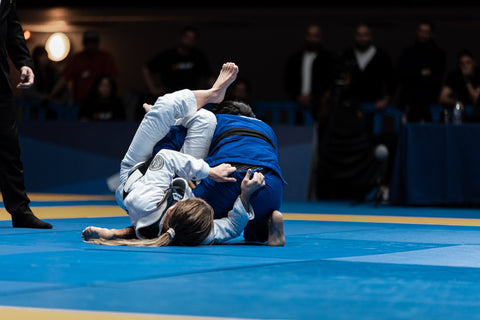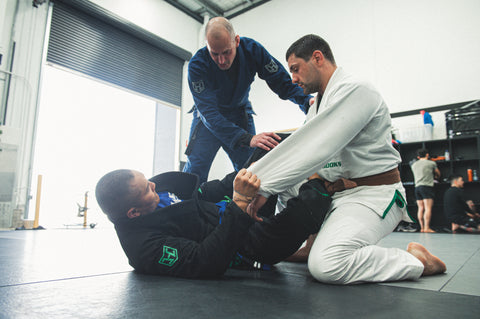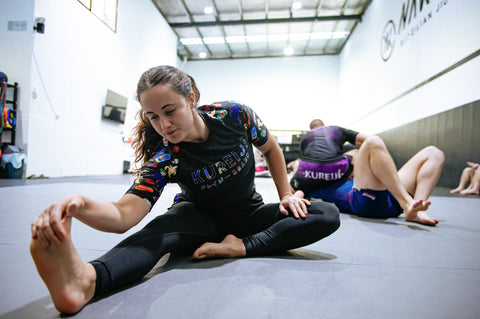
How to Find the Best BJJ Gym For You
Looking to get going on your jiu-jitsu journey, but don’t know where to start? You’re not alone. Trawl through BJJ or MMA Reddit, and you’ll find at least five different threads from would-be white belts asking for advice on choosing their very first jiu-jitsu gym. Ultimately, there’s no single correct answer for every person; It all depends on where you’re coming from in life, and what your personal goals are. Are you, for example:
- A lifelong wrestler fresh out of university, who’s looking for a new physical outlet that feels familiar yet fresh?
- A middle-aged mother or father of three who’s been sedentary for the past decade, who needs a stimulating new form of exercise?
- A busy 9-to-5 professional with an office job who’s new in town, and hoping to make new (non-work!) friends at an early morning or late night hobby?
- An aspiring MMA fighter with a strong background in boxing or Muay Thai who’s been told to study more ground game?
- An elderly retiree who enjoyed martial arts in their youth, and was looking for an accessible way to get back into the practice?
Some of the above? None of the above? No matter what your answer is, there’s a gym somewhere out there that offers a jiu-jitsu program perfect for your needs. Depending on your demographic, however, the correct answer to “What’s the best BJJ gym for me?” may well differ from the best option for another day-one white belt – and we’re here to help!
In order to make an informed decision, the best possible recourse is to visit multiple gyms in your area and ask questions of students, coaches, and owners at each academy – This will help you to get a sense of certain intangibles like the mat culture, and to sort out more logistical concerns like scheduling, class availability, and pricing.
But how do you know what you should be looking for or what questions to ask?
Again, the answer will vary from student to student, but it’s worth asking yourself the following questions in order to narrow down your search.
Do you have specific concerns when it comes to starting a jiu-jitsu practice – such as previous injuries, age or size, specific disabilities, a history of physical trauma, etc?
Contrary to common belief, not everyone who wants to take up a combat sport – particularly one commonly called “the gentle art” – is a musclebound, able-bodied 25-year-old meathead. If you’re elderly, disabled, or otherwise suffering from a history of injury or ailment, you may have concerns about jumping into an appropriate class – and more importantly, a gym that fosters an appropriate culture.
When you’re visiting your local jiu-jitsu academies, be sure to ask the people in charge about accommodations for students who might not be in peak physical condition. Ask about how certain injuries or disabilities are handled, and whether there are classes that are particularly friendly to older beginners. Survivors of physical abuse, assault, and other related trauma who may find close contact combat triggering may also seek out an academy that staffs trauma-informed coaches, or otherwise trains staff in how to appropriately handle these sensitive issues.
Do you prefer training with or without the gi – or both?
The sport of jiu-jitsu is divided into roughly two primary practice categories – gi jiu-jitsu, in which the traditional gi or kimono is worn, and lapel gripping is legal – and no-gi jiu-jitsu, or submission wrestling, in which the practitioners forgo donning the classical gi uniform, and where grabbing clothing is strictly forbidden in competition.

While a healthy majority of jiu-jitsu practitioners have trained both styles, many favor one or the other. Judo players making the crossover into jiu-jitsu, for example, often enjoy the tricky lapel game available to gi practitioners, while former wrestlers frequently prefer the familiarity of a no-gi competition format.
If you have a strong preference for one style or the other, make sure you pick a gym whose curriculum emphasizes your practice category of choice. No-gi enthusiasts, for example, often find themselves very much at home at 10th Planet gyms, which specialize purely in no-gi submission grappling. Many gyms that boast more traditional or “old school” lineages, on the other hand, are often well-known for strong gi programs and competition teams.
Do you want a gym that focuses purely on jiu-jitsu, or are you hoping to cross-train in other martial arts like MMA or Muay Thai?
Many practitioners who take up the gentle art simply never look back or feel the need to cross-train any other martial arts. Others, however, wish to pair their jiu-jitsu practice with a striking-based art, or other related grappling disciplines such as judo or wrestling.
Depending on your preference and appetite for variety, you may want to seek out a full-fledged MMA gym, or a jiu-jitsu academy that offers additional martial arts programs. On the other hand, if you’re content to remain strictly a jiu-jitsu student, you may be happier in a pure jiu-jitsu academy, where you won’t have to compete with other programs like boxing and Muay Thai for coveted class time slots throughout the week.
Do you want to become a serious competitor, focus on being primarily a hobbyist, or something in between?
Some gyms boast serious competition firepower – think Alliance, AOJ, Atos, DreamArt, 10th Planet, and pretty much any name you recognize consistently in association with athletes who make the podium at IBJJF Worlds, Pans, and Euros, or increasingly, at ADCC events. While the hardcore competition training environment in these hallowed halls may feel a little intense for the average hobbyist, they can be a dream come true for the young blue belt with dreams of winning an IBJJF Grand Slam.
You don’t necessarily have to find a “big name” academy to train for major competitions either – plenty of smaller gyms boast big name competitors. If your goal is competition, the most important resources to find are an experienced coach who knows your preferred ruleset(s) and connects well with you, and training partners who know how to challenge you – safely, of course!

However, plenty of perfectly respectable jiu-jitsu black belts have never competed in their lives, and have no desire to. The tournament scene isn’t for everybody, and if you’d rather keep your jiu-jitsu practice within the confines of open mat, there are plenty of more hobbyist-oriented academies where you can find a chill, welcoming culture without the looming pressure of competition sitting on your shoulders.
How important is it to you to train with members of your own demographic?
While Brazilian jiu-jitsu remains a sport heavily dominated by athletic young men, even in the broader family of martial arts, demographics are gradually changing. Women, children, elderly folks, and athletes with disabilities are slowly joining the global landscape of the gentle art – and falling in love with the sport, just like everyone else. However, they do remain an overall minority.
If you’re a minority within jiu-jitsu, finding like minded teammates in your own demographic can go a long way toward making your grappling practice feel more enjoyable.

Not every female jiu-jitsu athlete feels the need to attend a women’s class, but training with those who share your body type, attributes, and general goals can be helpful – especially for aspiring competitors. Women, seniors, and juveniles may benefit from joining gyms that already boast a healthy population of practitioners in their demographic. This can make jiu-jitsu as a whole feel a little less intimidating, while also offering a measure of safety for those working with physical limitations and other challenges.
At the end of the day, a good gym can eventually feel like a family and help you to achieve your long term goals, so it is worth the time it takes to find the right BJJ gym for you. It won’t always be the one closest to you, or the first one you try.
Use these considerations to get to the bottom of what you want to get out of your practice, and don’t be afraid to ask questions!

